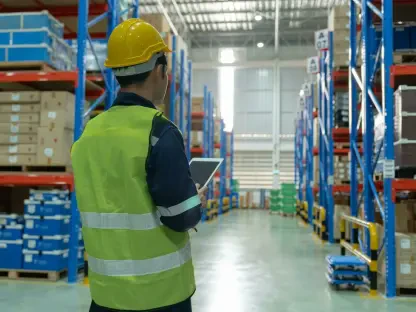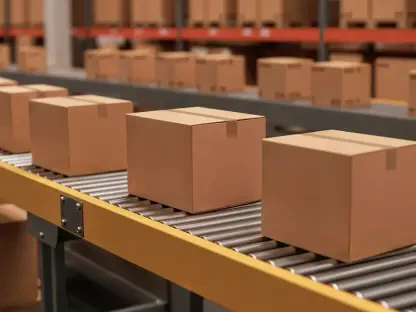In today’s fast-paced industrial world, precision in measurement has become a linchpin for success. Inaccuracies in this domain frequently result in inefficiencies, escalated costs, and even safety hazards. Industries ranging from freight and transport to manufacturing face high stakes, where any margin of error can lead to significant losses. Enter 3D measurement systems—technologies designed to eliminate these obstacles with precision and effectiveness. This review aims to delve into the advanced features, inherent challenges, and potential future pathways of these cutting-edge systems.
Understanding the Core of 3D Measurement Systems
3D measurement systems have emerged as pivotal tools in modern industry, standing at the intersection of innovation and operational excellence. At a fundamental level, they involve capturing and analyzing three-dimensional data, translating physical measurements into digital form for enhanced accuracy. This process integrates multiple components such as laser scanners, cameras, and specialized software to ensure comprehensive data capture and processing. As manufacturing processes become increasingly digitized, these systems have secured a critical role in ensuring precision and efficiency across various applications.
The relevance of 3D measurement systems transcends industry boundaries—they are foundational within the broader technological landscape. These technologies not only ensure the accuracy demanded by the populace but also empower the adoption of smart technologies. The rise of Industry 4.0 has further cemented their position as a must-have for firms eager to boost productivity while reducing waste and operational glitches.
Distinctive Features and Principal Components
Advancements in 3D Scanning Technologies
The heart of any 3D measurement system is its scanning technology, essential for perceiving and interpreting three-dimensional spaces accurately. This scanning process involves emitting laser beams or using imaging techniques to capture detailed spatial data. These systems measure dimensions, distances, and depth with razor-sharp accuracy, which is critical for sectors where precision is paramount. Through advanced algorithms and modeling techniques, 3D scanning offers unparalleled insights into spatial configurations, setting the stage for improved planning and execution.
What sets modern 3D scanning apart is its capability to deliver real-time, dynamic results. This transformation empowers businesses to make immediate adjustments, optimize workflows, and enhance production speed without sacrificing precision. The impact is profound: fewer operational halts, seamless project transitions, and improved resource management now characterize industries leveraging this technology.
Seamless Integration of Real-Time Data
Real-time data integration has emerged as a decisive factor in the efficacy of 3D measurement systems. By weaving together various data inputs instantaneously, the technology ensures that stakeholders have immediate access to up-to-date information. This capability radically transforms traditional sectors like logistics and construction by facilitating swift decision-making and reducing reliance on retrospective analysis.
The ability to integrate real-time data also enhances responsiveness, a quality highly sought after in industries where timeliness and accuracy are synonymous. It enables a comprehensive overview and continuous updating of metrics, which is invaluable for project management and error reduction. In essence, real-time integration acts as a bridge between raw data and actionable intelligence, furnished in a shape ready for instantaneous implementation.
Pioneering Developments and Recent Innovations
In an era characterized by relentless technological evolution, 3D measurement systems are no exception. Recent innovations have introduced more portable and versatile devices that bring measurement precision even closer to where it is needed most. New strides have been made in miniaturization and device mobility, giving rise to enhanced field adaptability and solution customization. With these advancements, businesses can deploy systems tailored to meet specific requirements, an invaluable asset in diverse industrial settings.
Moreover, the integration of artificial intelligence and machine learning into these systems heralds the onset of smarter and more adaptive technologies. These capabilities enable systems to learn from previous datasets, enhancing their overall precision over time. The potential for smarter analysis and prediction bolsters the system’s role as an indispensable tool for quality assurance and operational efficiency.
Application Across Diverse Real-World Scenarios
3D measurement systems have transformative applications across numerous sectors, from transportation to construction, and beyond. Their role in freight and logistics manifests in optimized space allocation and reduced manual labor through swift, accurate cargo assessments. Industries benefit immensely from such reductions in operational time and cost. Highways and public infrastructure similarly leverage these technologies through digital highway scanning, which elevates safety and project delivery timelines.
In industry-specific contexts, such systems have supported the aerospace and automotive sectors to push the boundaries of design and production accuracy. These applications illustrate not only their versatility but their profound impact on enhancing sector efficiencies—whether by ensuring compliance standards or by unlocking new possibilities through precise data handling.
Challenges Confronting the Technology
As robust as 3D measurement systems appear, they are not void of challenges. The complexity of the technology necessitates specialized skills for operation, often leading companies to grapple with the initial learning curve and training requirements. Additionally, regulatory policies governing data usage and privacy can present hurdles, particularly given the expansive data capture capabilities of these systems.
Market-related obstacles also persist, driven by costs of implementation and capital investment. However, ongoing research and technological refinement aim to minimize these barriers. Researchers are devoted to developing more user-friendly interfaces and cost-effective solutions, facilitating broader access and continued adoption across industries.
Looking Forward: The Evolution of 3D Measurement Systems
As industries continue to evolve, 3D measurement technologies are expected to meet and surpass ever-growing demands. Prospects for future breakthroughs are promising, particularly with the integration of novel technologies such as IoT connections and immersive virtual reality interfaces. These enhancements could redefine user interactions and expand functionality further. By fostering more collaborative and productive environments, the technology promises continued transformation across industrial landscapes.
The long-term impact of these systems may well extend beyond industry. As automation and digitalization trends grow, the technology could enable smarter cities, improved resource management, and better infrastructural planning, driving societal advancement and innovative sustainable practices.
Final Thoughts
In summary, 3D measurement systems have had a transformative impact on industrial operations, offering unprecedented precision and functionality. Advancements in tools such as 3D scanning technology and real-time data integration have redefined resource management and project execution. Conquering ongoing challenges requires focused efforts to reduce cost and complexities. However, future prospects remain bright, with potential promised by the convergence of emerging technologies. As society forges ahead into an era marked by digital and smart solutions, 3D measurement systems will undoubtedly play a pivotal role in shaping the industrial and technological paradigms of tomorrow.









